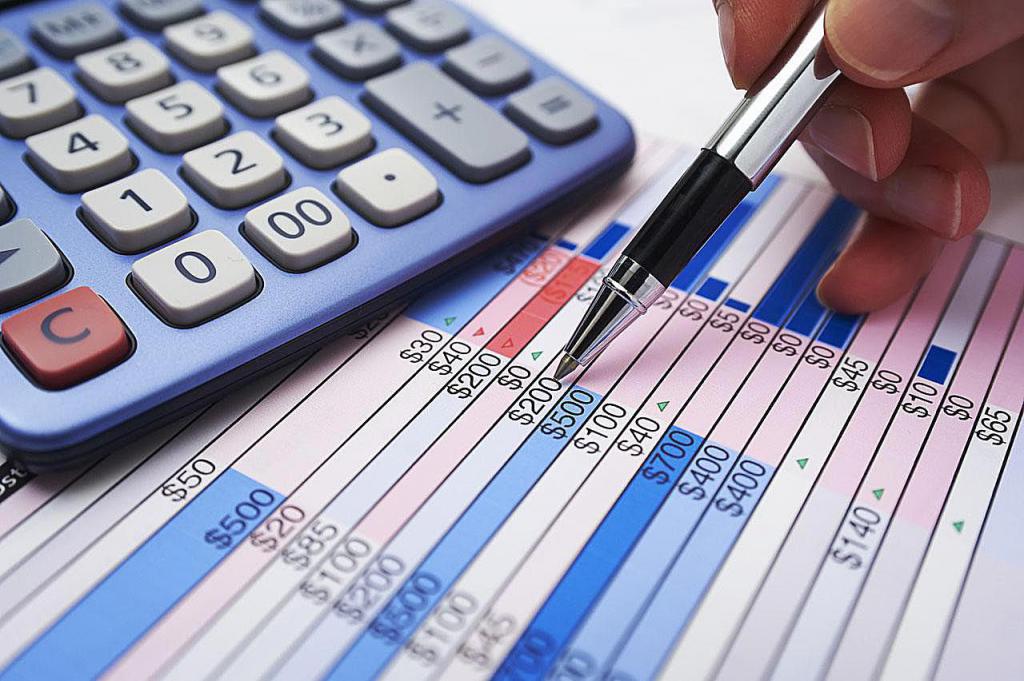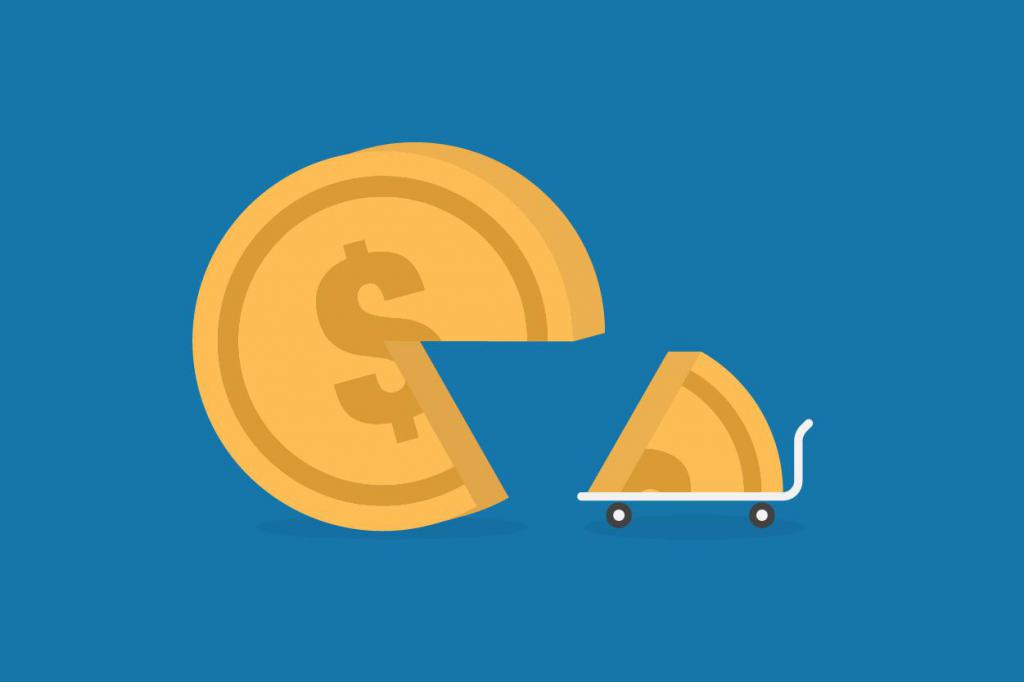Each company, while working, seeks to attract as many responsible and large contractors as possible. For this, an opportunity is often offered for the purchase of goods or services with deferred payment. This leads to the appearance of debtors who must return funds at a strictly set time. But often debtors are irresponsible payers, which leads to the absence of transfers from them. Bad debt is a significant loss for each company, so firms need to know how to prevent it from occurring and how it can be collected or debited.
The concept of receivables
These debts are represented by obligations to the company from other companies or individuals. They arise as a result of the transfer of goods or the provision of services with subsequent payment. Funds are not always returned on time, so the lack of coverage of such costs leads to the creation of doubtful, and often bad debt.
If it is not possible to recover money in different ways, then the debts are written off, but before that they should be recognized as hopeless.
Bad accounts receivable are debts for which there is no opportunity to return money. This is usually due to the expiration of the statute of limitations or liquidation of the debtor.

Types of receivables
Each company with debtors must independently rank all arising debts. Usually they are classified by their appearance. But in addition there is a distribution according to other signs:
- by the timing of occurrence, and usually months are taken into account for this;
- by the term of the claim, which allows you not to miss the time when it is necessary to take various actions that contribute to the recovery of funds;
- possible repayment, with bad debt usually at the very top of the list;
- by size of debt obligations.
Hopeful tax arrears are allocated separately, which is formed by tax authorities that cannot recover these funds from taxpayers in any way. This is due to the fact that firms or individual entrepreneurs declare bankruptcy, while they simply do not have assets through the sale of which debts could be repaid.
Other varieties
Debt is presented in numerous forms, which have their own characteristics.
| Type of debt | Nuances |
| Urgent | Money must be returned within three months from the date on which late payment occurred. |
| Overdue | Three months have already passed since the moment when the money should have been returned. |
| Claimed | The company sent a notice to the debtor that he would return the funds with already accrued penalties and fines. |
| Unclaimed | The lender has not yet taken any action to repay the debt. |
| With the possibility of return | Only a certain period of time is taken into account during which funds can be collected. |
| Bad debt | Debts that cannot be repaid for various reasons. |
| Confirmed by the debtor | The debtor really agrees that he has certain obligations, but for various reasons the money is not returned. |
| Unconfirmed | The debtor claims that it does not have corresponding obligations, and in this case the debts are doubtful. |
Thus, each business owner must understand exactly what debtors he is dealing with.
How to collect debts?
The procedure for collecting bad debts involves initially contacting the debtor directly with a request for a refund. For this, notifications are sent, and a document is compiled in duplicate. One is given to the debtor, and on the second he must put a mark on acceptance. This makes it possible for the creditor in the future to confirm that they used the pre-trial method of resolving the issue.

If this method does not bring the desired results, then you will have to go to court.
If the statute of limitations is skipped or the debtor declares himself bankrupt without possessing property that can be sold to pay off debts, then such obligations are recognized as hopeless. The creditor company must realize that it will not be able to return its funds in any way, therefore bad debts are written off.
Debt control
Each company that provides goods or provides services with a deferred payment should carefully monitor the existing receivables in order to collect them in a timely manner. For this, special accounting is carried out, the implementation of which indicates:
- who is the debtor;
- How long have companies been collaborating;
- amount of the authorized capital of the debtor;
- repayment terms;
- amount of debt;
- delays in payment with the cooperation earlier.
To track debts, a special schedule is drawn up that reflects changes in all important indicators. Especially much attention is paid to the periods during which it is required to repay debts by counterparties. For calculations, a special coefficient for repayment of obligations is applied.
The information related to the reserves formed for doubtful debts is carefully analyzed.
How are debts considered bad?
Bad debts are debts that cannot be repaid to the creditor in any way. They are identified by employees of the company with authority over the control of debts.

Debts are recognized as bad when identifying information:
- the debtor declares himself bankrupt, but the creditor did not manage to submit an application for inclusion in the register of claims;
- due to an error in the work of the creditor company, the statute of limitations was missed;
- the debtor is declared bankrupt, and it is revealed that he does not have any assets or other opportunities for repaying debts.
All debts should be assessed exclusively by professionals with the appropriate authority.
Who confirms bad debts?
All debts may be:
- Doubtful. Its signs include the appearance of debt, so the debtor does not transfer funds for services or goods at a strictly set time allotted for this. There is no guarantee, security or bank guarantees. This leads to the appearance of such debts by the creditor of various fines and penalties.
- Hopeless. Recognition of debt uncollectible occurs by specialists of the creditor company. For such obligations, there is almost no possibility of recovery. At the same time, the debts must meet certain requirements, for example, the statute of limitations has expired, the debtor has been forcibly or voluntarily liquidated, or there is a judicial act against this company, for which there is no way for the company to pay off its debts.
Bad debt is a negative moment in the work of any company, as the company is forced to incur significant expenses. Therefore, initially it is advisable to take various measures aimed at the return of all debts in a timely manner.
What debts can be written off?
Not all debts of a company can be written off, therefore it is important to carry out this process in relation to obligations that are really impossible to collect in various ways. The concept and signs of bad debt are contained in paragraph 2 of Art. 266 Tax Code.

If the debtor is an individual entrepreneur, even its closure does not constitute a basis for recognizing the debt as hopeless, as entrepreneurs are liable for their obligations with personal property. It is allowed to write off such debts only after the individual entrepreneur is declared bankrupt or his death is recorded. This process is also permitted if the entrepreneur hides for more than three years.
Limitation period
Bad debt is written off after the expiration of the statute of limitations of 3 years. This period is interrupted in situations:
- the debtor signed the reconciliation report;
- a letter was sent by the debtor stating that he recognizes his debts and asks for a deferred payment;
- interest or forfeit paid by the company;
- firms have formed through peaceful communication a special supplement to the agreement in which the debtor recognizes its obligations;
- The claim is accepted by the court.
After the interruption of this period, it starts anew, but the total number of years cannot exceed 10.

Write-off Rules
The procedure for writing off bad debts involves the following actions:
- debt is initially recognized as hopeless;
- a special order is drawn up on the basis of which an inventory of debt is made;
- the results of the inventory are recorded in the act, formed according to the form INV-17;
- the head of the creditor company issues an order to eliminate the debt, and it indicates the size of the debt, the reasons for its non-return, and there should also be a link to the documents on the inventory.
Writing off bad debt collection should be done competently and taking into account numerous requirements, since this action is checked by the Federal Tax Service employees with special care. Therefore, it is advisable to additionally attach other papers confirming the occurrence of the debt, the reasons for which it is not returned, as well as other evidence of the transaction and the use of various actions to return the funds to the act of the inventory.

Nuances in accounting
The write-off of such a debt in accounting depends on the availability of a provision for doubtful debts. In the presence of such a reserve, a record D63 K62 is made, on the basis of which bad debts are written off at the expense of the funds from the reserve.
If the amount of the debt exceeds the existing reserve, then the difference must be added to the other expenses of the company, therefore posting D91.2 K62 is usually used for this.
Over the next five years, debts written off are recorded in full on account 007, and only then they are completely written off.
If there is no reserve in the company, then such debts are included in expenses and are taken into account on the balance sheet.
After the bad debt has been written off, all documents related to this process should be kept for 5 years. If necessary, they are transferred to the employees of the Federal Tax Service for inspections.

Write-off in tax accounting
Unearned funds from counterparties are classified as expenses only by firms that use the accrual method to determine income tax. It is not allowed to carry out this process to companies that use UTII or STS during operation.
If an individual entrepreneur operates on an OSSE basis, they may write off receivables that cannot be repaid for various reasons.
Thus, bad debts are debts that cannot be repaid for various reasons. It can appear in any company. It is subject to cancellation, and this process must be performed in the correct sequence of actions. The rules of procedure in tax and accounting are taken into account.
